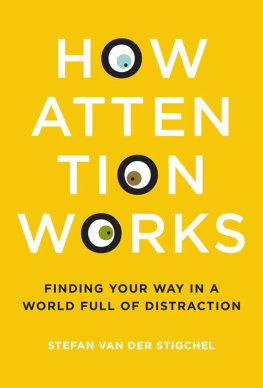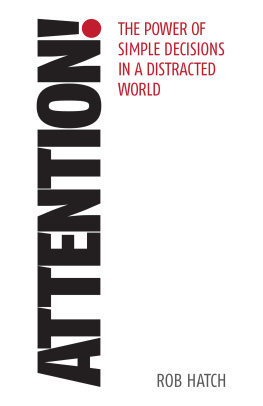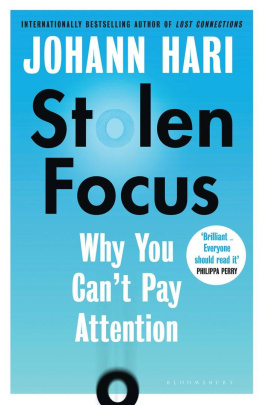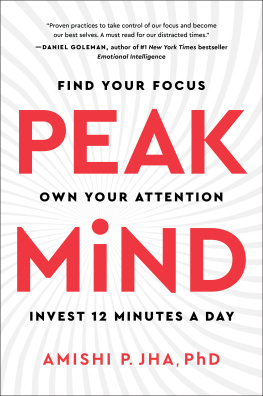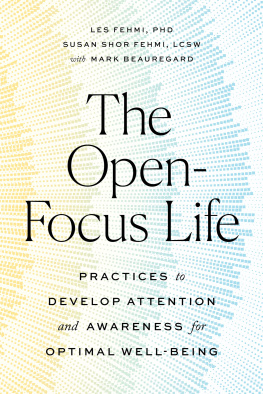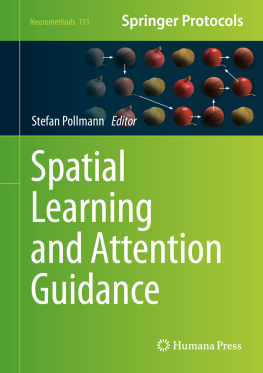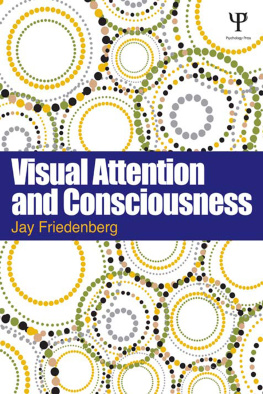How Attention Works
Finding Your Way in a World Full of Distraction
Stefan Van der Stigchel
Translated by Danny Guinan
The MIT Press
Cambridge, Massachusetts
London, England
Copyright 2016 by Maven Publishing, Amsterdam, The Netherlands
First published in The Netherlands under the title Zo werkt aandacht
Text copyright 2016 by Stefan Van der Stigchel
This publication has been made possible with financial support from the Dutch Foundation for Literature.

All rights reserved. No part of this book may be reproduced, transmitted, broadcast or stored in an information retrieval system in any form or by any means, graphic, electronic, or mechanical, including photocopying, taping, and recording, without prior written permission from the publisher.
This book was set in Stone Sans and Stone Serif by Jen Jackowitz. Printed and bound in the United States of America.
Library of Congress Cataloging-in-Publication Data is available.
ISBN: 978-0-262-03926-0
eISBN 9780262350969
ePub Version 1.0
Every one knows what attention is. It is the taking possession by the mind, in clear and vivid form, of one out of what seem several simultaneously possible objects or trains of thought. Focalization, concentration, of consciousness are of its essence. It implies withdrawal from some things in order to deal effectively with others, and is a condition which has a real opposite in the confused, dazed, scatterbrained state.
William James
Preface
In 1995, a 27-year-old police officer, Kenny Conley, found himself pursuing a suspect after a shooting incident in Boston. Other police officers were also involved in the chase. When these officers spotted a man climbing over a fence, they immediately apprehended him. They used considerable force when doing so, and the man suffered kidney damage and serious head injuries. However, there was an even bigger problem: the man they had arrested was not a criminal but an undercover agent who had also been pursuing the suspect. In the ensuing investigation into the possible use of excessive force, Kenny Conley was called as a witness. He had arrived on the scene while the suspect was being arrested and must have seen which officers were involved. However, Conley insisted that he had not seen the struggle and had been focused purely on apprehending the fleeing suspect. The jury didn't believe him. They were convinced that he had attempted to protect his colleagues when giving his statement. Conley was charged with perjury and obstruction of justice and sentenced to 34 months in jail. He appealed the decision and was released from custody pending the outcome of the appeal. After seven years of legal wrangling, he was finally acquitted and awarded damages of $600,000.
Researchers decided to take on the challenge of recreating the events that led to Conley's initial conviction. Test subjects were asked to pursue a suspect along a sidewalk and to count the number of times the suspect touched his head with his hands during the chase. After reporting this information to the researchers, the test subjects were then asked whether they had noticed the fight that had been staged eight meters away from the sidewalk while they were chasing the suspect. Most of the test subjects had failed to see the fight, just like Kenny Conley.
If you dig deeper into the subject of visual perception, you will quickly discover that we actually register very little of the visual world around us. We think that we see a detailed and stable world, but this is just an illusion created by the way in which our brains process visual information. This has important consequences for how we present information to othersespecially attention architects.
Everyone whose job involves guiding people's attention, like website designers, teachers, traffic engineers, and, of course, advertising agents, could be given the title of attention architect. Such individuals know that simply presenting a visual message is never enough. Attention architects need to be able to guide our attention to get the message across. This means that they have to fight for our attention: website designers use all kinds of tricks to capture the attention of visitors, magicians fool us by distracting us, and directors manipulate our attention to make their movies appear as realistic as possible. Whoever can influence our attention has the power to allow information to reach us or, conversely, to ensure that we do not receive that information at all.
After reading this book, you will hopefully be more aware of the continuous battle for our attention that rages all around us. Attention architects try every trick in the book: they hang up screens with moving images in busy city centers, add flashing banners to websites, and develop computer programs with blinking icons to attract our attention. Sometimes attention architects do this for our benefit and sometimes for their own, like when they want to sell us something. We have a certain level of control over our attention, and so we can try to ignore their attempts to distract us. But we don't always succeed. We are often slaves to our own attention system and can become distracted at times when we really should be focusing our attention elsewhere. This is why it is important to know exactly how attention works.
1
Barrier? What Barrier? The Illusion of a Rich Visual World
There was genuine cause for celebration in the Netherlands on July 21, 2014, when the Coen Tunnel, one of the country's worst traffic black spots, was reopened after major renovation work. It was hoped that the revamped tunnel would help traffic in the area to move more smoothly. One of the improvements was the addition of an extra tunnel that can be opened and closed, depending on the volume of traffic. When not in use, this tunnel is closed by means of a clearly visible barrier. To prevent motorists from accidentally driving into it, they are warned of the tunnel's closed status by a series of bright red crosses above the road that can be seen from a good distance out. If you were to drive up to the Coen Tunnel yourself, you would find it hard to believe that anyone could fail to see the barrier.
Less than a year after the tunnel was reopened, a 63-year-old motorcyclist suffered serious injuries when he failed to notice that the extra tunnel was closed and crashed straight into the barrier. It was the twentieth such accident since the renovation job. The authorities tried to warn road users more effectively by hanging up additional warning signs, using vehicle-mounted flashing arrows, and installing steel traffic cones. In addition, the barrier itself was fitted with flashing LED lights and made to appear larger. The warnings were all to no avail. Drivers continued to crash into the barrier at high speed without even taking their foot off the gas.
Of course, one explanation is that some road users are distracted by their radio or mobile phone at the critical moment when they should be heeding the warning signs, but this does not apply to every accident. After all, the barrier can be seen from a long way out and drivers tend to watch the road carefully. And in the case of the unfortunate motorcyclist, it is highly unlikely that he was busy checking his phone or tuning the radio. So why do things still go wrong?
When we go for a walk in the woods, we generally enjoy the sight of all the trees around us and the myriad shades of green. We open our eyes and allow our visual environment to work its magic. Our eyes are our window to the world. All we have to do is open them to be able to see. It happens automatically. Spotting a squirrel in a tree or following the tracks of a horse are reflex actions. We believe that what we see is the whole picture: stable, rich, and vastly superior to any virtual environment.
Next page
